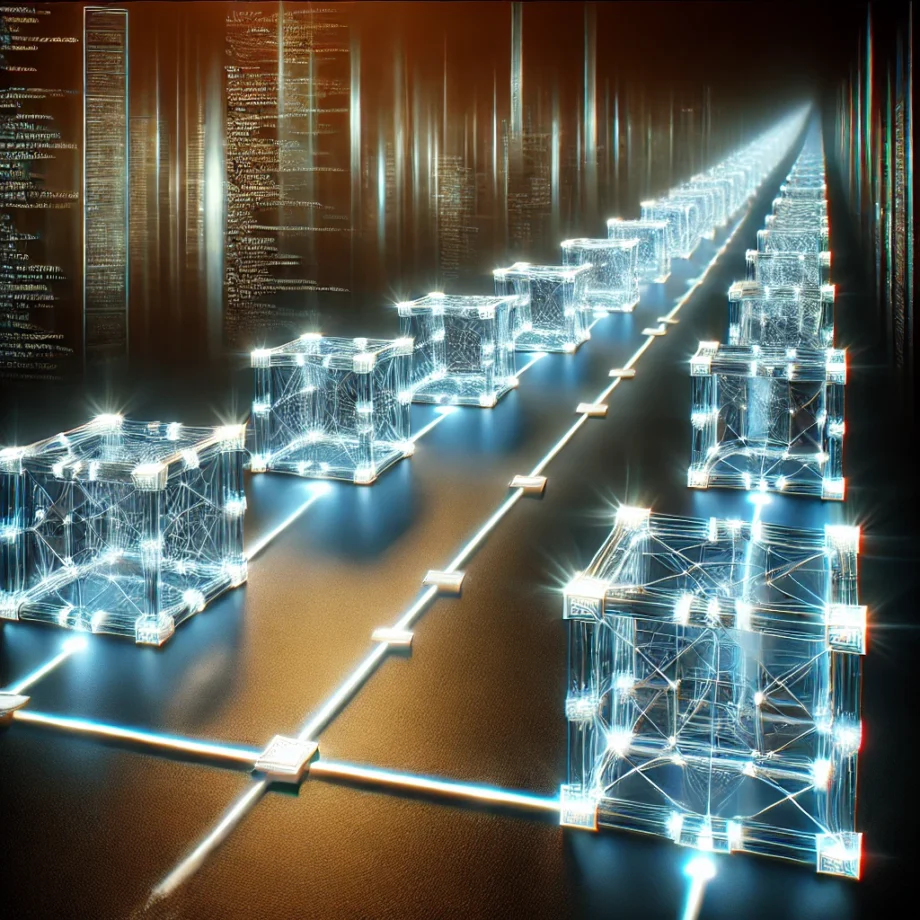Introduction
In the world of blockchain technology, sequencers may not always get the spotlight, yet their role is absolutely foundational. Picture a blockchain as a constantly updating ledger, recording transactions around the clock. Amid this nonstop activity, the sequencer is the behind-the-scenes organizer, ensuring that each transaction finds its proper place in the blockchain’s immutable history.
A sequencer’s essential role is to bring order to what would otherwise be chaos. High-throughput blockchains can process thousands of transactions each second, creating an overwhelming flow of data. Without sequencers, blockchains would resemble messy libraries, with transactions scattered everywhere—making it nearly impossible to determine what happened when. But with each transaction carefully ordered, sequencers provide the clarity and structure that blockchain depends on to function.
The sequencer’s work begins as it gathers transactions from nodes across the network. Then, it organizes these transactions into chronological order, timestamping each one precisely by the moment it enters. This ordered list is then shared with the network’s validators, who verify each transaction’s authenticity before adding it to the blockchain. The sequencer functions like a timekeeper, preserving a clear, accurate record of every interaction. This prevents risks like double-spending and other transaction disputes by establishing a precise order of events.
The “trust” in this process doesn’t rely on any single person or centralized authority. Instead, blockchain’s decentralized framework and cryptographic backbone allow everyone on the network to verify the sequencer’s actions, making the entire process transparent and accountable. Here, trust rests with the system itself, not with any individual or group.
In decentralized networks, the role of the sequencer becomes even more complex. Multiple sequencers may operate simultaneously, each vying to propose the next sequence of transactions. Sophisticated algorithms choose the “winning” sequencer’s proposal, which keeps everything synchronized and prevents any single sequencer from manipulating transaction order. This process, I believe, is what upholds blockchain’s “trustless” nature, letting it operate smoothly even under heavy loads.
Interestingly, sequencers can do more than simply organize transactions. In some networks, they influence which transactions make it into each block, a responsibility that affects transaction fees and overall network performance. This power shows how sequencers contribute to shaping blockchain’s efficiency and even its future development.
Finally, the sequencer relies on an entire ecosystem to keep everything running smoothly. For instance, a Rollup Smart Contract on Layer 1 blockchains often manages Layer 2 sequencers, securing data from Layer 2 transactions on the main blockchain. Monitoring systems track sequencer performance, flagging unusual activity and enabling quick responses to potential issues. Nodes scattered across the network also propagate sequencer data to all participants, adding transparency and ensuring that everyone stays synchronized.
In the end, while sequencers work in the background, they are vital to blockchain technology. By imposing order on a constant stream of transactions, sequencers support blockchain’s promises of integrity, transparency, and immutability. Sequencers enable blockchain participants to interact with confidence, free from reliance on intermediaries. As blockchain technology continues to evolve into new applications, the role of sequencers will become even more essential in ensuring the decentralized, secure foundation that makes blockchain so transformative.
Scaling the Summit: Navigating Technical Challenges in Blockchain with Ethereum and Beyond
When I look at blockchain technology, I see a powerful, transformative tool—but I also see it wrestling with major technical hurdles, especially around scalability and transaction speed. These limitations are rooted in the tricky balance between decentralization, security, and efficiency. Ethereum, the most popular platform for smart contracts, highlights these challenges: its average transaction throughput hovers between 15 to 45 transactions per second (TPS), which is far below what’s needed for broad adoption.
The urgency of this bottleneck has spurred a wave of innovation, leading to exciting Layer 2 solutions like MegaEth and SEI, which each claim impressive theoretical capacities—100,000 TPS and 20,000 TPS, respectively. These solutions rely on techniques like sharding and optimistic rollups to handle transactions off-chain, which eases the load on Ethereum’s mainnet and opens new doors for scaling.
But Ethereum isn’t alone in the scalability race. Some newer blockchain projects are setting remarkable transaction-speed records. Solana, for instance, combines Proof of History with Proof of Stake to hit over 4,000 TPS, while Aptos, a recent addition, uses a parallel execution engine that promises up to 160,000 TPS. When I look at these numbers, I see a glimpse of what’s possible for blockchain’s future scalability.
However, these high-speed blockchains come with trade-offs that I can’t ignore. Achieving these speeds often means compromising on decentralization or security, which raises tough questions about their long-term viability. And even if they succeed, the issue of interoperability remains. Bridging different blockchains seamlessly is still a significant challenge, complicating the movement of assets and data across the ecosystem.
Ethereum’s upgrade to Ethereum 2.0, with its shift to Proof of Stake and upcoming sharding integration, should eventually bring big improvements to its base-layer scalability. But it’s clear to me that Layer 2 solutions and high-throughput blockchains will continue to play a crucial role, especially as more diverse use cases emerge.
In the end, blockchain’s journey to true scalability is an ongoing story. Despite the technical roadblocks, the steady pace of innovation—within Ethereum and across the blockchain landscape—shows a dedicated push toward overcoming these hurdles. This momentum reassures me that blockchain will eventually reach its potential to reshape industries and transform digital interactions.
The Interconnected Ecosystem of Blockchain Sequencers
When I think about the architecture of blockchain technology, Layer 1 (L1) blockchains stand out as the foundational pillars holding everything together. They aren’t just the final, secure record of transactions—they also support Layer 2 (L2) solutions, which rely on L1’s security to achieve the scalability and efficiency blockchain users need. Here’s how it works: while the sequencer on an L2 network organizes and processes transactions off-chain, it periodically sends batches of transactions, along with cryptographic proofs, to the L1 for final settlement. This design enables L2 solutions to handle transactions at high speeds and volumes, all while drawing on the established security of the L1 network.
Connecting L1 and L2 layers is the Rollup Smart Contract, a vital piece that ensures both layers remain in sync. This self-executing contract on the L1 verifies the proofs submitted by the sequencer, keeps the states consistent across layers, and manages asset deposits and withdrawals. In a way, it acts as a gatekeeper, enforcing rules that protect the integrity and security of each cross-layer transaction. The Rollup Smart Contract allows the L1 to keep oversight, while the L2 handles the heavy lifting of high-volume processing.
This operation relies heavily on a robust network of nodes distributed across the blockchain ecosystem. I think of these nodes as the backbone of blockchain’s communication system, responsible for sharing transactions and blocks throughout the network. They ensure that the sequencer’s work reaches everyone who needs it, which maintains transparency and keeps the entire system synchronized. Each node’s role might seem small, but together, they’re essential to creating the seamless and connected blockchain experience users depend on.
The blockchain’s consensus mechanism lies at the heart of this entire ecosystem, setting the rules for fairness and security in how sequencers are chosen and their transaction orders validated. Whether a blockchain uses Proof of Work or Proof of Stake, the consensus protocol dictates which sequencer gets to propose the next batch of transactions and ensures that all participants adhere to a common standard of trust and integrity. It’s a process that underpins the reliability and neutrality of blockchain technology itself.
In the context of Layer 2 solutions, bridging assets and data between L1 and L2 is also crucial. These bridges enable users to make the most of L2’s speed and efficiency without compromising the underlying security that L1 provides. With the sequencer organizing each transaction in proper order, these transfers occur smoothly and without inconsistency, creating a unified experience for users moving between layers.
Lastly, monitoring and alerting systems, though often overlooked, play an invaluable role in keeping the entire blockchain environment stable. By tracking metrics and catching potential issues early, these systems make quick responses possible and help prevent network disruptions. They ensure that every layer—from the sequencer’s transaction ordering to the broader network—operates reliably and with minimal downtime.
Ultimately, this whole system exists because of the users who rely on it for secure, transparent interactions. Every time a user initiates a transaction or interacts with a smart contract, it’s the sequencer, the Rollup Smart Contract, and the entire network infrastructure working behind the scenes to ensure a seamless experience. Even if users aren’t aware of each component, these elements are there, harmonizing complex functions into a stable, efficient blockchain ecosystem. It’s a sophisticated design that not only enables blockchain’s potential but makes it resilient enough to keep pushing the boundaries of what’s possible in digital technology.
Getting Involved With Blockchain Sequencer Technology Education
Becoming an expert in blockchain sequencers is an exciting and multi-layered journey, blending a solid foundation in blockchain basics with hands-on experience, deep technical exploration, and continuous learning.
Step 1: Building a Strong Foundation
To master sequencers, start by solidifying your understanding of blockchain fundamentals. It’s essential to understand core concepts like consensus mechanisms (e.g., Proof of Work and Proof of Stake), cryptography, and smart contracts, as these form the underlying architecture within which sequencers operate. Developing programming skills—especially in languages used for blockchain, like Solidity or Rust—will give you the insight needed to understand sequencer implementations and, eventually, contribute to new developments yourself. Adding knowledge of distributed systems and their challenges, such as achieving consistency in decentralized environments, will also prepare you for the unique complexities of running sequencers.
Step 2: Diving Deep into Sequencer Technology
With a strong foundation in place, you’ll want to dive specifically into sequencer technology. Studying the architecture and code of sequencers in various blockchain projects will expose you to different design approaches and help you see the trade-offs developers make. Reading recent research papers and staying updated on advancements in sequencer technology will broaden your perspective and deepen your understanding. Joining online communities and forums where developers discuss sequencers allows you to learn from the experiences of others in the field, giving you a firsthand look at challenges and solutions that may not be covered in formal resources.
Step 3: Getting Hands-On with Sequencers
To really understand sequencers, practical experience is essential. Start by setting up and running a sequencer node on a test network or locally. This lets you experiment with configuration options and get a feel for how sequencers operate. Contributing to open-source projects that utilize sequencers offers a chance to work with real-world implementations while connecting with developers and learning on the go. As you gain confidence, experimenting with new concepts or algorithms related to sequencers through personal projects or research collaborations can take your skills to the next level.
Step 4: Committing to Continuous Learning and Adaptation
Blockchain is a fast-evolving space, so staying up-to-date is key. Following conferences, workshops, and online resources will keep you informed on the latest developments in sequencer technology and blockchain overall. Networking with other professionals at industry events and collaborating on projects provides invaluable opportunities for learning and growth. Sharing your knowledge—whether through blog posts, presentations, or even mentoring others—not only reinforces your understanding but also gives back to the community.
Understanding the Broader Ecosystem Around Sequencers
To truly grasp how sequencers function, look at how they fit within the larger blockchain system. Components like Layer 1 networks, rollup contracts, and consensus mechanisms all contribute to blockchain’s transaction processing. Considering how each of these parts supports the sequencer’s role enhances your appreciation for its contribution to blockchain’s security, efficiency, and scalability. This broader perspective provides a holistic understanding of how sequencers interact with other essential components within the blockchain ecosystem.
By combining these elements—laying a strong foundation, diving deep into technology, getting hands-on, and staying committed to learning—you’ll be well on your way to becoming an expert on blockchain sequencers. It’s a journey that isn’t just about mastering skills but also about contributing to a groundbreaking field with the potential to transform industries and redefine digital interactions.





